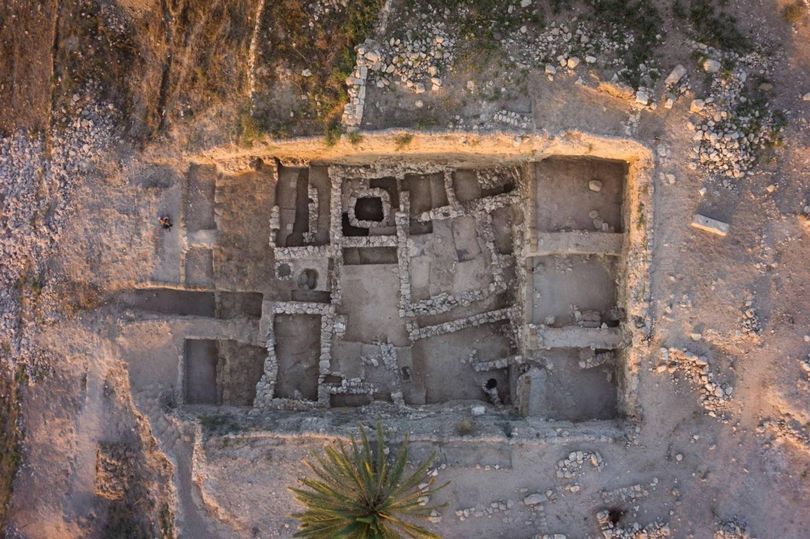Unearthing Biblical History
Archaeologists have uncovered “incredible” evidence that suggests a Biblical king was defeated by a massive Egyptian army thousands of years ago. The findings indicate that a significant force from Egypt overcame one of the legendary kings mentioned in the Bible, with the discovery of Egyptian pottery remnants confirming their presence in the Levant. Recent research points to Josiah, the last major monarch of Judah, being defeated by the Egyptian Pharaoh Necho II. His death at Megiddo in 609 BCE marked a critical moment for the kingdom of Judah.
The events took place at the site of Megiddo, which is also known as Armageddon, a name often associated with apocalyptic prophecies in Christianity. Until March this year, there had been no archaeological proof of Egyptian involvement in the region. However, a unique collection of ceramic pieces was found in present-day Israel, providing new insights into the historical events that transpired.
Evidence of Egyptian Presence
The discovery included an unexpected number of Egyptian and Greek pottery, according to Professor Israel Finkelstein from Haifa University and Dr Assaf Kleiman from Ben-Gurion University. They and their colleagues have explored these findings in two articles published in January and February in the Scandinavian Journal of the Old Testament. Their research suggests that the refuse left behind serves as evidence of Necho’s Egyptian troops being present, possibly alongside Greek mercenaries.
Megiddo was part of the Kingdom of Israel during the 10th-9th century BCE. However, there is ongoing debate about whether the territories were once part of the so-called David and Solomon kingdoms and whether the united Israelite monarchy described in the Bible actually existed. What is known is that Megiddo was a significant hub for at least two centuries. Around 732 BCE, it was captured, and the Israelite capital of Samaria fell a few years later.
Historical Significance
Megiddo, now known as Magiddu, became the capital of a new Assyrian province in the Levant. Over time, Assyria faced pressure from rising powers in Mesopotamia and Iran, such as the Babylonians and the Medes. Around 630 BCE, the Assyrians abandoned Megiddo. In 609 BCE, Egypt under Necho’s leadership marched into the Levant to support the failing city.
In Jerusalem, Josiah had ruled for 31 years before he was defeated by Necho at Megiddo. The reasons for Necho killing Josiah remain unclear according to the Book of Kings. However, the Book of Chronicles suggests that Josiah attempted to block Necho’s advance, leading to a disastrous battle where the Judahite king was killed.
Discoveries at Megiddo
The bulk of ancient Megiddo was excavated during the 1920s by a University of Chicago expedition, which removed most of the upper layers to access earlier settlements beneath. However, a largely undisturbed section in the northwest corner of the site, called ‘Area X,’ remained intact.
It was in this area that Finkelstein’s team discovered a stone-paved courtyard. Based on the pottery found, the structure was built in the mid-seventh century BCE. The discoveries included fragments from local ceramic vessels, including traditional cooking pots, alongside serving dishes showing Mesopotamian influences.
Cultural Insights
“Scholars believed Megiddo completely changed socially, that the ratio of the local population was very low or non-existent, but we show it must have been higher than what was previously believed,” Kleiman says. “There must have been a significant component of Levantine population in Megiddo at the time, and we see this, for example, in the cooking pots, which are very important cultural and social indicators. The pots we found tell us the population at the site cooked like their parents and grandparents, in the same local traditions.”
The most significant discovery was a collection of pottery in Area X, predominantly of Egyptian origin. “When we opened the boxes of finds from the dig at my lab in Ben-Gurion University, I told my students to put the Egyptian pottery on the tables, and table after table got filled,” recounted Kleiman. “The number of Egyptian vessels is double or even triple the amount found in the entire Levant for that period. This is not decorated fine tableware, so it’s very hard to argue that someone at Megiddo, a deportee or a surviving Israelite, all of a sudden acquired a taste for sub-par Egyptian pottery and decided to import it into his house.”







